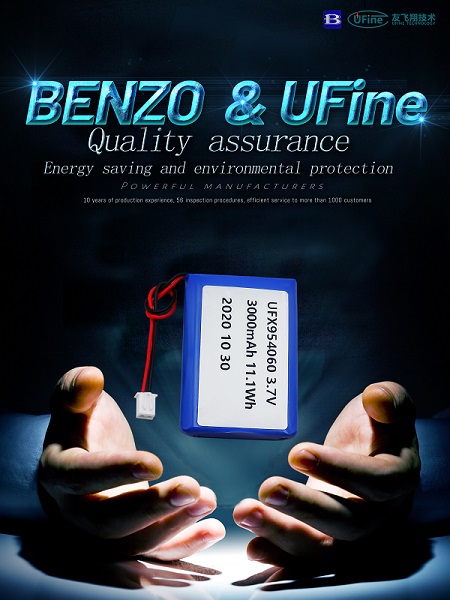Lithium-ion batteries are divided into two categories: non-rechargeable batteries and rechargeable batteries. Non-rechargeable batteries are called disposable batteries. Disposable batteries can only convert chemical energy into electrical energy, but cannot restore electrical energy to chemical energy (or have poor reduction performance). Rechargeable batteries are called secondary batteries. It can convert electrical energy into chemical energy and store it. When used, the conversion of chemical energy into electrical energy is reversible, which is an important feature of electrochemical lithium-ion batteries.
Pay attention to fire prevention while using lithium-ion batteries. Many people may become familiar with lithium-ion batteries from their mobile phones. In fact, it is used in many household appliances. There is no doubt that lithium-ion batteries are being used rapidly due to their high efficiency and lightness. However, if the lithium battery is used accidentally, it may catch fire!

Lithium-ion batteries have many advantages, such as light weight, high efficiency, low internal resistance, low temperature use (-40℃), thin thickness, flexible shapes, long service life. Alkaline dry batteries and manganese batteries have been gradually eliminated, and lithium-ion batteries are widely used in many high-end home appliances and mobile phones.
Unlike water-soluble electrolytes such as zinc chloride and potassium hydroxide currently used in manganese batteries and alkaline dry batteries, lithium-ion batteries use organic solvents. The positive electrode of lithium ion battery is made of manganese dioxide, lead fluoride, sulfite chloride and other materials. Compared with the zinc chloride used in the negative electrode of general batteries, the lithium foil used in the negative electrode has a strong ionization tendency, and the voltage difference between the positive electrode and the negative electrode is large, which improves the working efficiency of lithium-ion battery.
However, heating and burning often occur in the process of using lithium-ion batteries, which will affect the use of the equipment, and maybe cause the equipment to catch fire. In recent years, there have been some domestic fires caused by the burning of lithium-ion batteries.
So why do lithium-ion batteries generate heat and burn? When many materials of lithium-ion batteries come into contact with water, they will undergo violent chemical reactions and release large amounts of heat energy, leading to heat generation and combustion. Manganese dioxide is one of the main cathode materials for lithium-ion batteries. It only needs a drop of water to heat up. After the lithium ion battery is in contact with water, sulfite chloride releases a lot of heat and when hydrochloric acid and sulfur dioxide appear. Therefore, people must pay attention to waterproof and moisture-proof when using lithium ion batteries. When the device is out of service, the lithium-ion battery should be taken out and stored in a dry, low-temperature place for safekeeping to prevent fire accidents caused by improper use of the lithium-ion battery.
Fire characteristics of lithium batteries
Lithium batteries can ignite spontaneously and then explode due to overheating. The causes of overheating include electrical short circuit, rapid discharge, overcharging, manufacturing defects, poor design or mechanical damage, etc. Overheating will lead to the "thermal runaway" process, that is, the exothermic reaction inside the battery will cause the temperature and pressure inside the battery to rise at a rapid rate, thereby wasting energy.
Once a battery cell enters a thermal runaway state, it will generate enough heat to make adjacent battery cells enter a thermal runaway state. As each battery cell ruptures in turn and releases its contents, a flame that burns repeatedly occurs. This causes the flammable electrolyte in the battery to leak, and if a disposable lithium battery is used, it will also release combustible lithium metal. As a result, a huge problem arises. These fires cannot be treated like "normal" fires, and targeted training, prevention and control planning, reasonable storage and establishment of fire suppression systems are required.
In most cases, lithium battery fires should not be handled like ordinary fires. Its combustion characteristics and release of toxic by-products are not the same. The corresponding organization can determine its risk level through appropriate assessments and create emergency response procedures. Pay close attention to the chemical safety data sheet (MSDS) and other recommendations made by manufacturers and distributors. These documents specify feasible methods for proper storage, handling and emergency response. It should be noted that the MSDS recommendations usually fluctuate greatly and sometimes are very different.



